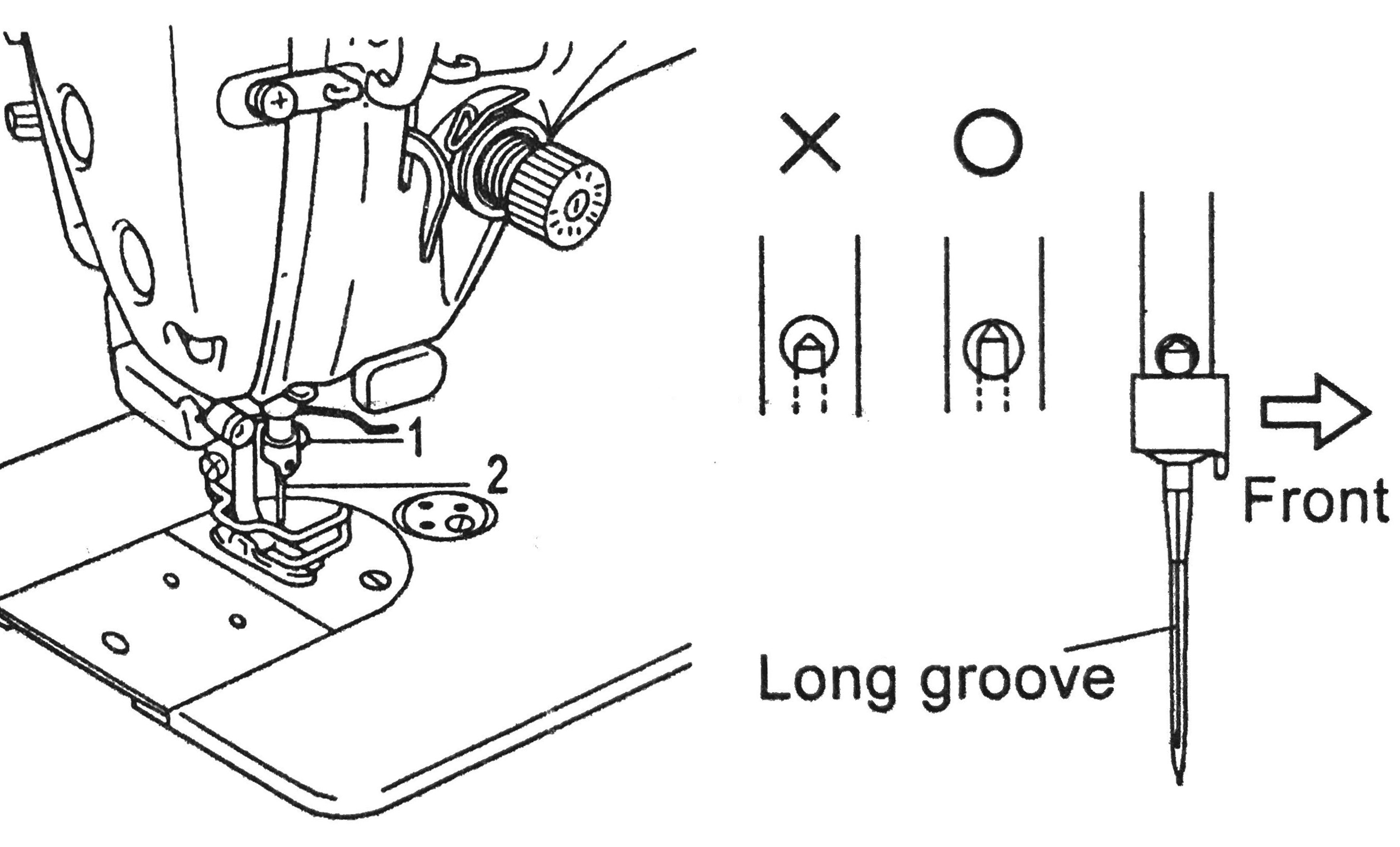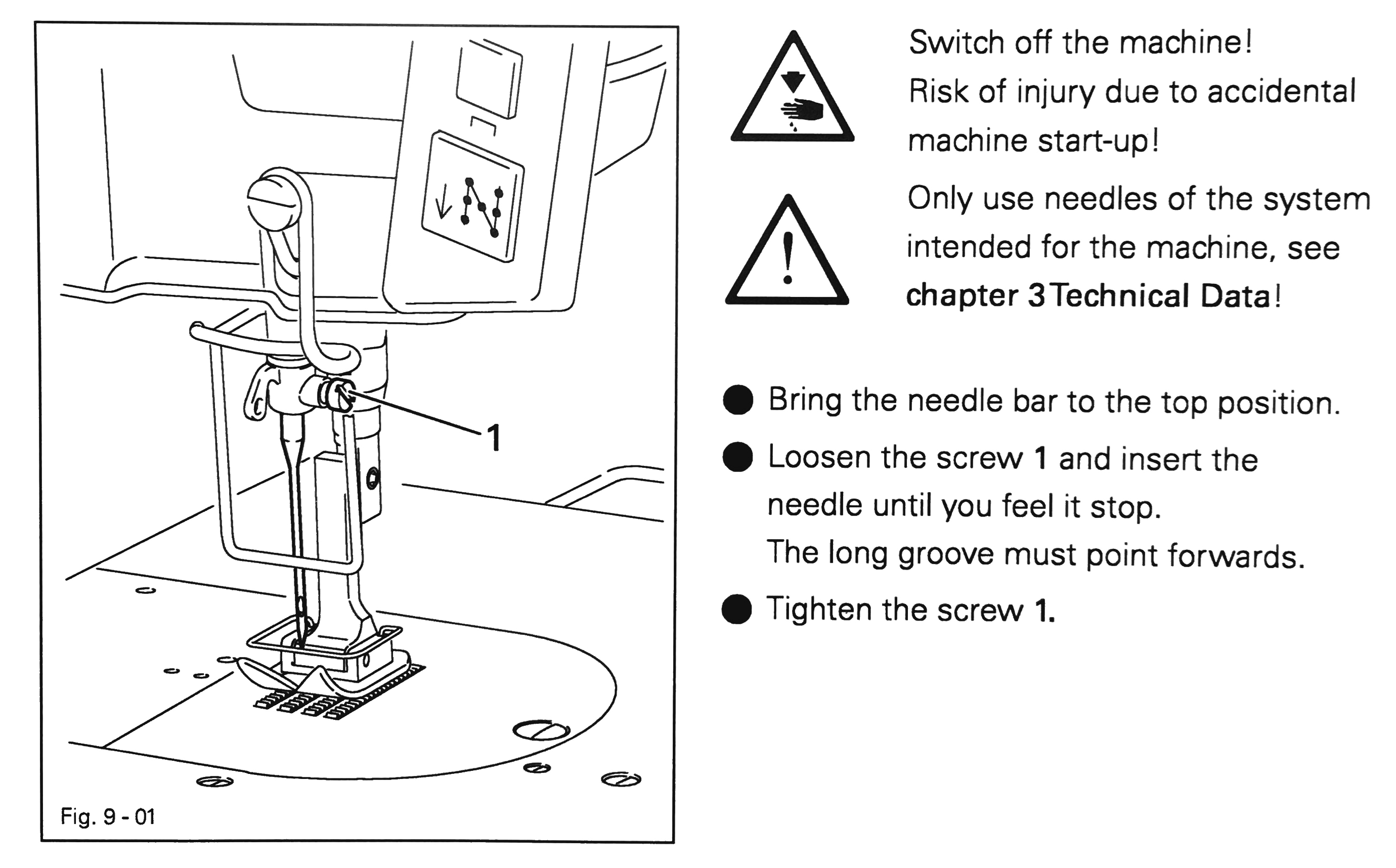OK7 Costume Workshop
Ompelimon käsikirja
Suorituksen vaatimukset
Tutustut teollisten ompelukoneiden langoitukseen ja asetusten säätämiseen sekä silityspisteen käyttöön. Ohjevideot (5) opastavat teollisen ompelukoneen ja saumaajan käytössä sekä säätämisessä. Huom! Avaa kirjan sisällysluettelo oikean yläkulman mustasta nuolesta "Avaa lohkot".
YLEISOHJEET
- Valitse kone käyttötarkoituksen mukaan (kts. laitekuvaukset).
- Ota kone pois päältä puolaa/ neulaa vaihtaessasi sekä langoitusta tarkistaessasi.
- Silmä- ja sormisuoja on pidettävä aina paikoillaan.
- Koneet ovat äärimmäisen harvoin rikki, yleensä kyse on langoituksen ongelmista tai neulan kunnosta. Ole kärsivällinen ja yritä selvittää ongelma.
1. Teolliset ompelukoneet
1.2. Neulan vaihto
Neulan valitseminen:
Tarkista konekohtainen neulasarja ja valitse oikean vahvuinen neula materiaalillesi. Lanka vaihtuu paksummaksi vahvempien neulojen (nrot 100-130) kanssa.
- Nro 70 ohuet materiaalit.
- Nro 80 perusneula suurimmalle osalle materiaaleista.
- Nro 90 keskiraskaat materiaalit.
- Nro 100-130 raskaat materiaalit.
- Nahkaneulat nrot 90-130, neulan kärki on veitsimäinen.
- Pallokärkineulat, joustaville materiaaleille (siksak -koneet, saumaajat).
Neulan vaihtaminen:
Yleisin syy hyppytikkiin on neulan kärjen vioittuminen. Vioittumista on välillä haastavaa erottaa paljaalla silmällä.
-
Sammuta kone. - Löysää ruuvi (1) ja poista neula, kierrätä erilliseen roskapurkkiin ompelutarvikekaapissa "terät ja neulat".
- Aseta uusi neula paikoilleen pohjaan saakka (O), kiristä ruuvi.
Neulan asento:
Neulan pitkä ura osoittaa samaan suuntaan kuin puolakotelo, lanka menee neulan silmään pitkän uran puolelta.
- Suoraommelkoneissa neulan pitkä ura osoittaa vasemmalle ja lanka menee neulansilmään vasemmalta oikealla.

- Siksak -koneissa neulan pitkä ura osoittaa eteen ja lanka menee neulansilmään edestä taakse.

